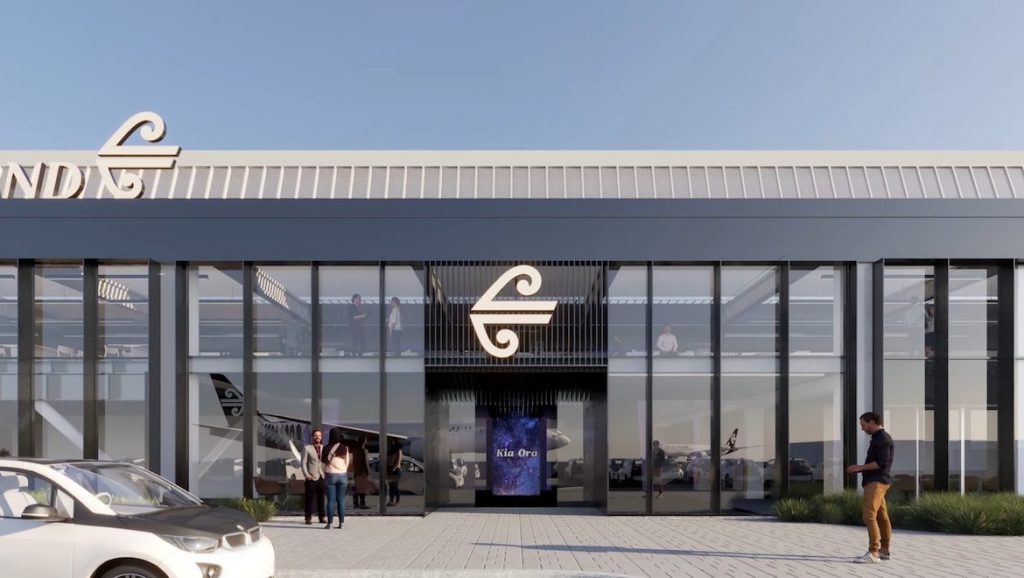
Air New Zealand is set to move its corporate headquarters from Auckland CBD to the airport, to house its head office and operational staff in the same building.
The airline will construct a new aircraft hangar and refurbish its existing office space and facilities at the airport, to support both its airport-based and office-based staff under the one roof.
Construction is set to begin this year, and the carrier anticipates all Auckland-based staff will begin working from the new airport facility in 2024.
Air New Zealand said the multi-year investment forms part of a “future-proofing” strategy to reduce costs by up to 20 per cent over 20 years and create a “world-class aviation facility” at the airport.
“We’ve spent the last two years looking at how we can set ourselves up for success as we revive our airline,” Air New Zealand chief executive officer Greg Foran said.
“We’ll be creating an environment where the people who plan our future work alongside those who operate our aircraft and work with our customers every day.”
Foran said that the airline has “more space than we need” in its current CBD offices and said Air New Zealand is already paying for a precinct at the airport with more than enough space to house its current workforce and then some.
“With building costs increasing and our CBD leases coming to an end, this is the time to get started on the work to bring our people together,” he said.
Foran said its corporate staff will take up residence at its terminal facilities, which will soon see a face lift.
“Rather than building a brand-new space, we’re refurbishing the existing one to bring our people together,” he said.
“There’s a lot of history in the current building, and if walls could talk, they’d have some terrific success stories to tell. We want to hold on to that and celebrate the history of the airline.”
Meanwhile, the airline is set to soon begin construction on a new 10,000 square metre engineering facility, dubbed Hangar 4, which will be built with sustainability in mind.
In a statement, the carrier said Hangar 4 will have a 6-star green rating and will be the largest single span timber arch aircraft hangar in the Southern Hemisphere.
“We’re confident that our long-haul operation will return so investing now in a new hangar that will be large enough to house a 787 and two A320s side-by-side in one space makes complete sense.
“It’s also been designed by our engineering and maintenance employees to ensure it’s suitable for them and the work they need to do.
“Our existing hangars were built in the 1960s and 1980s and, while they have served us well, our fleet has changed over the decades.
“We now have a need for a more modern, innovative structure that takes energy use and other sustainability factors into account.”
Earlier this week, Foran predicted that airfares on flights between Australia and New Zealand should drop in the coming months despite high fuel costs, as more travellers get moving.
Foran also revealed that at present, Air New Zealand covers the majority of the air travel market between Australia and New Zealand, with Qantas its only rival on these routes, trailing behind on scheduled flights.
The lack of competition has seen return flights between Sydney and Christchurch soar to over $800, while Melbourne to Wellington would set travellers back a similar amount.
However, “as competition increases, that will force pricing down,” Foran said.
“If we had the ability to ramp-up even more, we would, but we don’t, and therefore there is a situation where the prices are high,” he said.
“Air New Zealand is literally the only operator moving across the Tasman.”
Overall, Air New Zealand continues to ramp-up capacity, however, is doing so on a slimmer fleet, after cutting back to two-thirds of its pre-pandemic fleet.
“What we are going to do is we are going to use a tighter fleet and fly it heavily so that the key in this business is to get these things running 16 to 17 hours a day,” Foran said.
“The Tasman will be competitive and our biggest market so we won’t reduce capacity there and will maintain good market share.”















